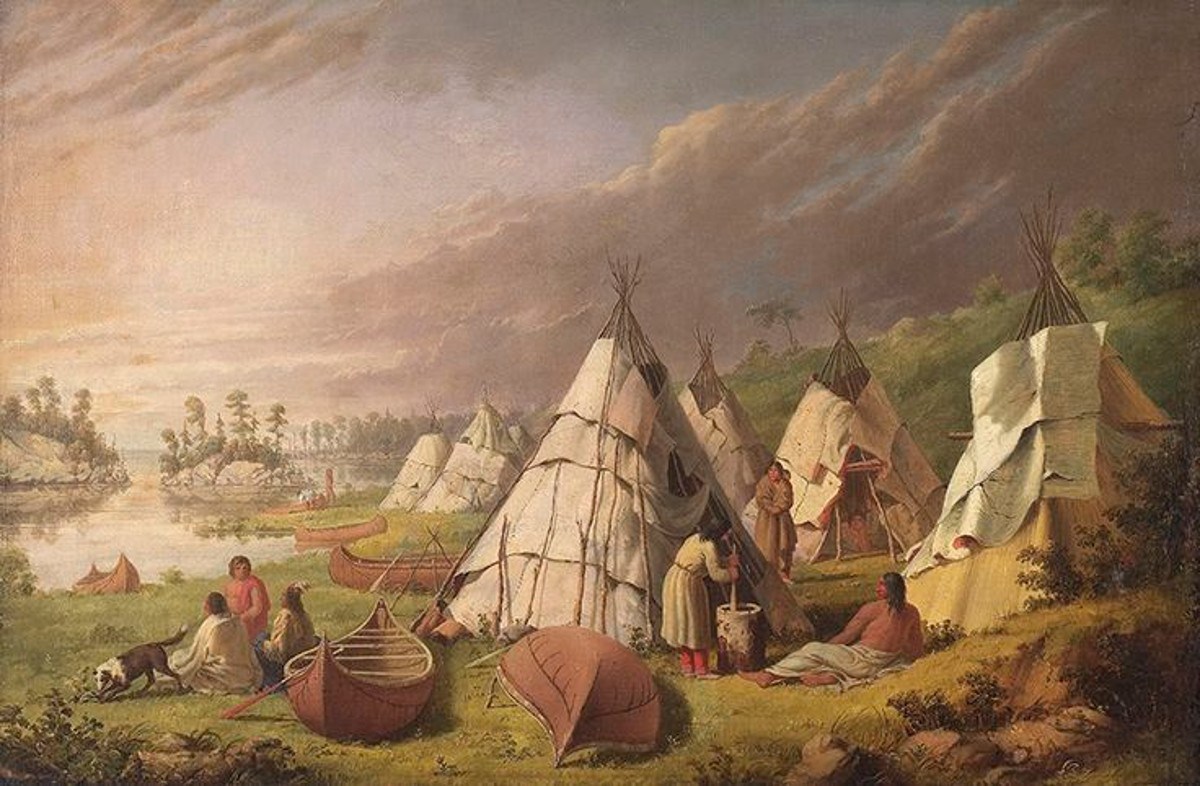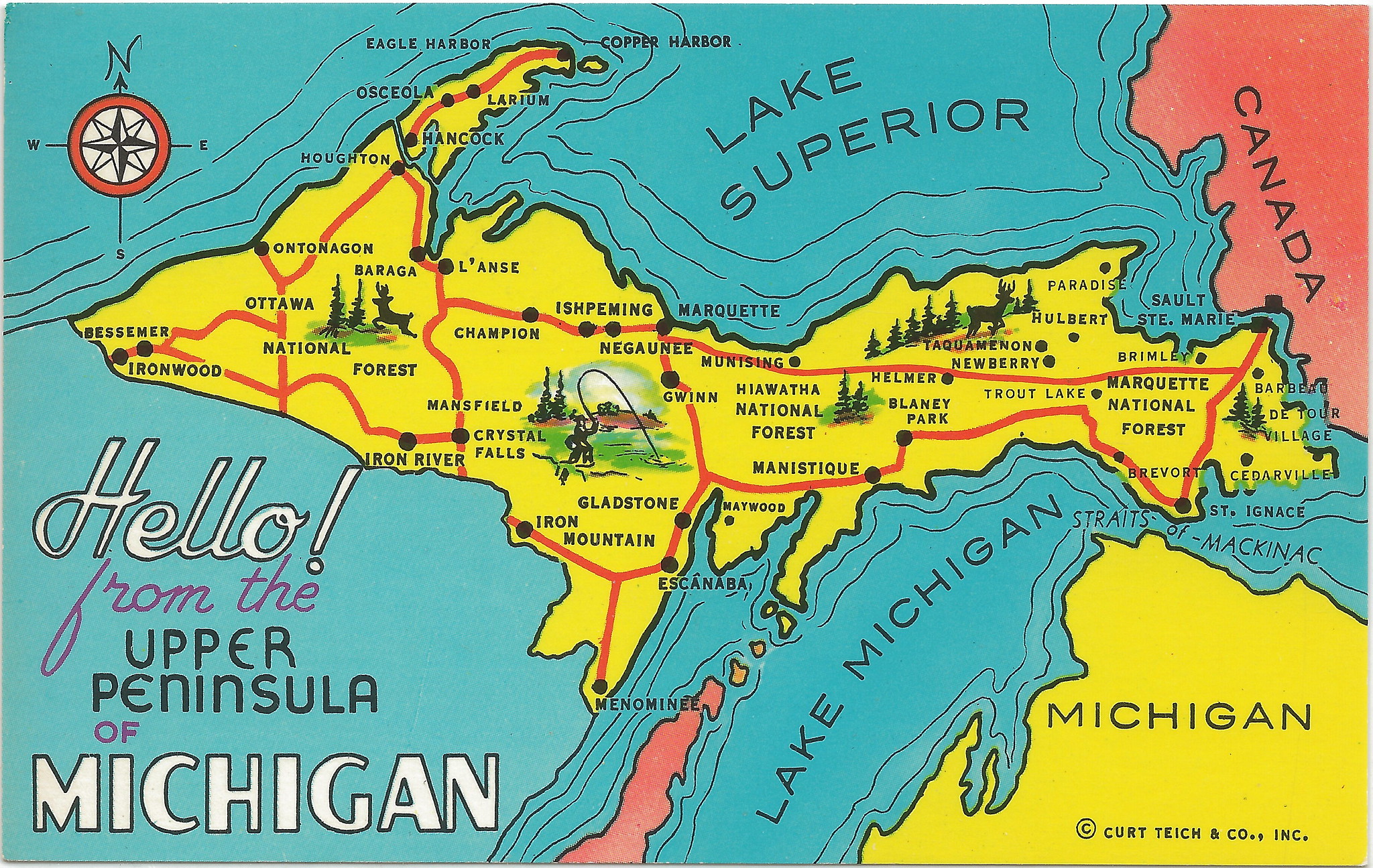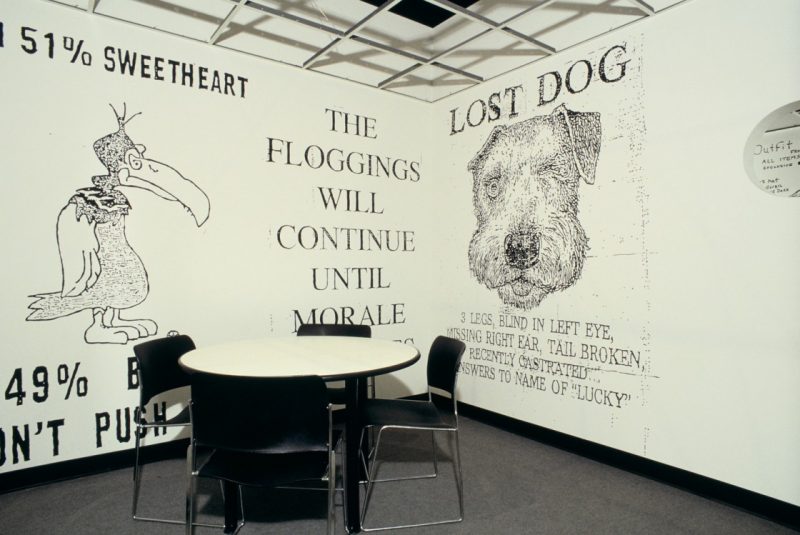
6) The new histories of empire are generically comic. Whether or not you find a given account of the frontier plausible will have a lot to do with positions you’ve arrived at, and tastes you’ve formed, before you’ve ever heard of Fort Duquesne or Blue Jacket. How do you think history typically proceeds?—except that most history-writing is narrative, so the question is better rephrased: What kind of stories do you think history typically yields? And before that: What do you think makes for a good story anyway? What kinds of stories are you drawn to? There comes a woozy moment, in any extended discussion of history-writing, when the emphasis has to shift from the history to the writing, from the conscientious checking and re-checking of paleographic fact to the fashioning of a narrative that living readers will find aesthetically satisfying and so assign explanatory effects. Informing yourself about the eighteenth-century American frontier—or about any other patch of imperial history for that matter—is not fundamentally unlike choosing a movie to watch. Your housemate turns to you and asks: “What are in you the mood for?” In the standard accounts of Pontiac’s Rebellion, the generic conventions are almost too easy to pick out. Literary critics surveying the available texts are likely to feel that they should have to try a little harder. A reader thus opens Francis Parkman’s Conspiracy of Pontiac, first published in 1851, and finds Anglo-American heroes “bold and hardy enough to venture” into Indian country in the face of “murderous attacks,” “stout-hearted” “adventurers” and men of “duty and courage” (455-6, 678, 456). Ranged against these chevaliers of the New World we find Pontiac, “the Satan of this forest paradise,” an “arch-demon,” avatar of a “murder-loving race” (508, 812, 829). The Ohio Valley becomes the stage of an American adventure story, or romance, with clearly delineated heroes, performing “memorable feats” “in the true spirit of heroism” and thereby squaring off against Indians who serve largely as obstacles to be overcome (579, 576). (Maybe your housemate has proposed that you watch an old Western. Maybe your housemate is your dad.) Of course, other genre cues can join themselves to these medievalizing ones. Parkman sometimes writes in a Homeric mode, filling his pages with war councils and martial catalogues, in a manner that suggests he meant to supply US literature with its missing epic. Similarly, he sometimes writes as the classical historian of the American colonies, with Tacitus and Herodotus as his proximate models, hence with the Indians cast as Goths or indeed as “barbarian hordes” (796). That said, the fundamentally neo-chivalric cast of Parkman’s language can be pegged to a single word, gallant, which he favors: The non-British commander of Fort Pitt is “the gallant mercenary,” supported by “the gallant Swiss, Captain Ecuyer,” a “gallant soldier” capable of “gallant conduct” (642, 734, 735, 794). Anglo-Americans used to refer to native American settlements as “castles.”[i]
To script the 1763 rebellion as a tragedy, meanwhile, is simple enough—it takes just two steps: First, Howard Peckham’s Pontiac and the Indian Uprising (1947) is the only monograph to present itself as a biography of the Ottawa leader. Chapter 1 is called “His Background,” Chapter 2 “His Early Life,” and so on. The effect of this choice is to frame a generalized anti-colonial war as the effort of a one admittedly important war-leader—or, if you prefer, to fix our attention on the program laid out by a single chief. Syntactically, this individualizing thrust makes itself felt via persistent synecdoche, in which the name “Pontiac” is made to serve as the term for the collected Indian forces: “If Pontiac could not stop the supply ships from reaching Detroit….” (210) “He [Pontiac] had failed to annihilate Dalyell’s force….” (209) Other literary conventions reinforce Pontiac’s centrality. It is Peckham’s habit to summarize the speeches given by other people only to reproduce Pontiac’s oratory in full, often over several pages, setting them off as monologues in a manner that readers are likely to experience as Shakespearean. The book’s biographical frame is thus reinforced by quasi-theatrical sequences, which Peckham can almost name as such: “The spotlight had been focused on [Pontiac] for the past several days, but this climatic appearance on the stage of Indian diplomacy was his last role of consequence.” (297) A man who never once saw a play, who in fact spent his life some six hundred miles from the nearest theater, is anachronistically described as thespian and leading player. Second, the historian, having emphasized the (theatricalized) agency of Pontiac as individual nonetheless insists on the limits of same. If we look back at the instances of synecdoche just quoted, we’ll see that they emphasize miscarriage and disappointment, rendering Pontiac as sole actor, but then announcing his inability to act or to complete an attempted action: He could not stop the ships. He failed to wipe out the British army. In his final chapter, then, Peckham reclassifies the book he has just written, swapping genres at the last possible moment. Pontiac’s has been a story about a “diminishing of power,” about “losing,” about “not attaining any of [one’s] objectives.” (319) In formulations such as these, biography yields to tragedy: The Indian leader “stood in our path for a moment and thrust us back, revealing the tragedy of his people and the cost of human progress. … From this date the real tragedy of the Indian begins.” (322) The scholar obligingly names his preferred plot-form at the moment of its conclusion. The first play written by an American to feature an American setting was Ponteach, or the Savages of America: A Tragedy (1766).
Or again, readers with more lurid tastes might decide they prefer David Dixon’s Never Come to Peace Again, published by the University of Oklahoma in 2005. That Dixon has written a kind of Gothic yarn—or perhaps a horror-Western in the manner of Ravenous or Bone Tomahawk—should be clear by Chapter 4 at the latest, when we read an interpolated “legend” about a British settler, killed by Pontiac outside of Detroit, trying twice to scrabble out of his burial ground, his “pale arm protruding from the grave.” (112) It is around that zombie-movie freeze-frame that the rest of Dixon’s book will now organize itself. Pontiac’s Rebellion was a war full of “bizarre tales,” the historian/crypt-keeper tells us in the language of the pulps, a “horrifying holy war” on the Indian side, a sequence of atrocities on the English side, outrages perpetrated by white “fiends.” Quotations from period documents obligingly make the genre argument for us: “Anything feigned in the most fabulous romance cannot parallel the horrid sight now before us.” (qtd 163) And it’s true: One wonders whether any other peer-reviewed monographs by tenured American historians feature quite so much cannibalism. Dixon even concludes his preface with a winkingly insincere warning/enticement to the reader—“I beg the reader to be indulgent through the relation of numerous horrific atrocities perpetrated by both sides during the conflict” (xiii)—a sentence that converts the academic prologue into a vintage B-movie teaser: “Do you have the guts to sit in this chair?” “Trained nurses will be available in the lobby.” “No refunds!” A reader skimming forward at this point will notice that Chapter 2 is called “A Colony Sprung From Hell,” in which the Ohio Valley becomes the stage for an American horror story. It remains to be said that an older version of literary theory would suggest that we call such hell-writing “satire” rather than “horror,” where “satire” refers to stories without heroes, stories, that is, in which the characters who would usually be regarded as heroic are merely victims or are themselves bad, hence stories in which nobody wins. Thus Dixon, in his book’s final pages: “Neither side could claim any decisive victory in the conflict.” (242) At one point he asks us to “ponder” a bit of anonymous backwoods graffiti: Nous sommes tous sauvages.[ii]
By now, anyone familiar with Northrup Frye’s short catalog of story-types or “fictional modes” will have realized that one of them is missing. Historians can fashion the stuff of the eighteenth-century frontier into an American romance; they can fashion it into an American tragedy; or they can fashion it into an American horror story. The mind now itches to ask whether they can also fashion it into an American comedy—a comedy, that is, that would include the Native Americans, since inclusion is one of the comic mode’s more important features. Can we fix our attention on the frontier and find (except—no, not “find”) there a story, not of universal savagery, but of new life, or revival and rejuvenation, a story in which there are no losers, a story of reconciliation in which everybody wins, in which nearly all the characters turn out to be good guys, in which apparent conflicts are revealed to be misunderstandings, and in which the social order remakes itself at last around a few improbable marriages? A reader can disagree with every page of Richard White’s Middle Ground and still admire the resourcefulness with which he sets about this unlikely task, point for point for point.
A story of revival and rejuvenation? White’s very first argument is that colonization was not just destructive; it didn’t merely mow down native people. Nor was it the extension unto monotony of older European social forms. Empire “creates as well as destroys”; or, better, it provokes rounds of creativity in Europeans and Native Americans alike. The last sentence of the book’s first paragraph reads: “Something new could appear”—a “new man,” “new systems of meaning and of exchange,” “new meanings and through them new practices.” (ix-x) In sun-saluting prose, Richard White summons his readers to the colonial equinox. The hard ground yields. Birds remember their song.
A story in which there are no losers? One is tempted to argue, as a discrete point, that the new histories of empire are pro-trade. The observation proves skippable, however, and not only because it is wholly unsurprising, but also because it is properly catalogued as one of the school’s comic impulses. In this regard, the most telling sentence in The Middle Ground is tucked into one of the book’s two distinct and widely separated attacks on dependency theory. White is out to contravene a group of dependency theorists, including a younger version of himself, who thought they could show that a growing reliance on European manufactures had narrowed the political options available to Native Americans in the period of westward expansion. The Europeans possessed a permanent bargaining advantage, one they did not fail to exploit, which was that they controlled access to goods that the vast majority of native people were not prepared to do without. Here, then, is that argument’s comic refutation: On the frontier, “it remained possible for both traders and Indians to profit from … exchange.” (484) Global trade under colonial conditions did not undermine Indian autonomy; it gave native peoples scope, rather, to initiative and self-reinvention. This was especially true around the Great Lakes, because trade with the French involved “love”; without that “love,” it’s true, trade risked turning “chaotic,” not oppressive, necessarily, but disordered. (265) This is an argument that White then gladly extends to military affairs: The biggest Indian uprising of the eighteenth-century sought, not an end to colonial rule, but an “accommodation between the races.” (270) Even “conflict” and “confrontation” are best grasped as opportunities to “rearrange … relationships.” (420) [iii]
A story in which apparent conflicts are revealed to be misunderstandings? White is interested in misunderstanding in two different modes. First, misunderstanding is one of the engines of imperial creativity: Forced to adapt to native lifeways, the French never fully comprehended the practices they had adopted, and so unwittingly created new ones, by force of persistent mis-emulation. That the same point can be made of the Indians, compelled to guess what the Europeans wanted from them and never quite getting it right, merely duplicates the point. American modernity is a bad translation and subtly botched rite. White’s second version of misunderstanding is more obviously of the type identified by genre theorists and directly recalls the plots of the comic stage. The Middle Ground reports on the moment when the Mingos, a breakaway group of mostly Seneca Indians who moved into the Ohio Valley in the eighteenth century, decided that the British had “bad designs” upon them. White calls attention to this instance of resentment and antipathy and then analyzes it in a manner that largely exculpates the British. The Mingos had given in to an understandable misperception. “Famine and epidemic, coupled with British trade policies, created an [Indian] image of the British not as misguided brothers, but as enemies, a malevolent people bound by neither kinship nor ritual obligations.” (275) Such is the subtlety of comic plotting, which it is easy to underestimate: A well-tooled comedy needs to be able to mimic the plots of epic and tragedy and the adventure story, simulating the conflicts and crises that are the indispensable stuff of narrative interest, and so affording, after a fashion, the basically jejune and melodramatic pleasures of the non-comic genres, all the while negating the plot’s various dangers and clashes, even as it stages them, by in the end re-classifying all conflict as misperception, transient and rectifiable. British imperial agents in North America were nobody’s enemy; they were, at worst, temporarily estranged kin: “misguided brothers.” “Misunderstandings were also the stuff on which the middle ground fed.” (383)[iv]
A story of societies remade by hitherto disallowed marriages? There is an x here that goes by many different names. The classically minded theorists of genre call it comedy. The Victorianists call it the marriage plot. The anthropologists call it exogamy. For a while, the postcolonialists made it seem compelling again by calling it hybridity. A literary historian might call it the last two chapters of Walter Scott’s Waverley. I’m writing for the moment about colonial North America, so I’ll call it the Pocahontas motif in order to observe that Richard White deploys it with the frequency of a priest publishing the banns:
-“Indians, like the [French] commanders, saw marriage as an integral part of their alliance with the French. . . .” (69)
-“To keep the villagers loyal, French commanders depended, too, on the métis legitimes and on the Frenchmen who had intermarried and traded among the Indians.” (215)
-The middle ground sponsored “a heterogeneous mix of different peoples loosely linked by intermarriage and common loyalties.” (316)
-“The French took wives from the Indians and produced children of mixed descent; the British took land and threatened the well-being of [Indian] children.” (342)
It is this last sentence that most bolsters one’s sense that Richard White thinks in terms of literary genre, though perhaps without realizing that this is what he is doing. In two pared-back clauses, he has assigned to each of the major North American empires its characteristic plot. The British Empire generates melodrama: sociopaths with posh accents menace the cowering young. The French Empire is a library of courtship novels, a favorite book multiply re-read, at the end of which there will always be a Québécois Darcy, ever-wedding his Anishinabe Elizabeth.[v]
Comedy, it hardly needs saying, is not an obligatory mode. It is at least as plausible to describe the pre-Revolutionary frontier as, in the words of another ethnohistorian, “a place where the peripheries of two cultures merged, creating potentially dangerous situations based upon tension, hostility, fear, and insecurity between the two peoples,” a “flux area,” unusually “precarious” (Kawashima: 2) Read alongside these contrasting claims—mixture, yes, but volatile mixture, dangerous to some of its human components, ready at times to re-separate—Richard White’s version of the colonial periphery stands out by virtue of its wholly amicable stability, not the stability of particular imperial or Indian formations, but the stability of the middle ground itself, as the matrix for these others. To hear White tell it, everything fed the middle ground; everything that happened on the middle ground, no matter how death-stalked or superficially antagonistic, was an invitation for further moderation and accommodation. The French were ousted from Canada, and the British got absorbed by the middle ground even as they refused it. The Indians arranged around Pontiac launched a simultaneous rebellion against every British fort in the west—and nonetheless ended up reaffirming the Middle Ground. One consults Gary Nash, summarizing a generation’s worth of research into Native America in the 1770s and ‘80s, and finds him writing that the American Revolution was a catastrophe for Native America (Nash: 346ff.; see also Calloway). And then one turns back to White, who claims instead that “for all its clamor and destruction, [the Revolution] watered the political middle ground….” (366) Even murder fed the middle ground: Every ambushed trader provided impetus for a fresh cycle of diplomacy; every killing was a chance to reaffirm friendships and expiate wrongdoing. “In fighting and death, as well as in peace and negotiations, there were contacts, meanings to be deciphered, and understandings reached.” (387) The most important thing about a murder is the people who come calling after the funeral.
Anyone still puzzled by White’s position need merely dip back into literary theory. You can tell what White is doing if you know how comedies work. For students of the genre have often observed that Shakespearean comedy, in particular, has a thing for forests. In many comedies, characters exit the ordinary world of city or court and remake themselves, not always by choice, in the woodlands outside of Mantua or Athens. When literary historians go looking for the origins of the frontier myth, they tend to single out the more or less martial genres of early American writing: captivity narratives, memoirs of Indian war. What Richard White has grasped better than these English professors is that comedy has always been a sylvan genre, too, no less than these others. It was only a matter of time, then, before some writer seized the genre-dictated opportunity to redescribe indigenous Wisconsin as the Forest of Arden. White’s most enduring bequest to the new histories of empire, replicated serially across the continents and across the university’s many regional expertises, has been to show scholars how to look at any contested zone of timber, bush, or jungle and to see there only the green world.[vi]
[i] For “castle,” see, for instance, Middleton 2007: 29, 33, 60, as in: British “claims threatened the upper Mohawk castle of Canajoharie.” (29) By introducing the question of genre, I am, of course, following a procedure first recommended by Hayden White in Metahistory.
[iii] The full quotations might be instructive in this instance: p. 265: “When gain rather than ‘love’ ruled the trade, exchange remained chaotic.”; p. 270: “Out of the radically different British and Alognquian interpretations of the meaning of the British victory over the French, it [Pontiac’s Rebellion] forged a new, if tenuous, accommodation between the races.”; p. 420: “To portray the confrontation along the Ohio simply as a conflict between the new American state and Indian tribes misses the complexity of the relationships between the various groups involved; it neglects the extent to which confrontation itself was rearranging the organization and relationships of the region.”
[iv] See also Martin Goodman in Rome and Jerusalem (386): “Bloodshed [in Judea in the early first century] seems always to have been the result of quite specific incidents. During the festival of Passover in the late 40s or early 50s a Roman soldier bared himself, turned his backside to the assembled pilgrims and let out a noise like a fart, according to Josephus’ account in his Jewish War; in the parallel account in the Antiquities, the insult was to display his genitals. (The accounts are of course not incompatible. Perhaps this was a cultural misunderstanding and Romans felt able blithely to joke about nudity and bodily functions in a way that Jews found disgusting.)”
[v] An early review by Rebecca Kugel highlights the centrality to White’s argument of Indian women and intermarriage. See also Plane 2002.
[vi] On the literary origins of the frontier myth, see especially Slotkin 1973.










